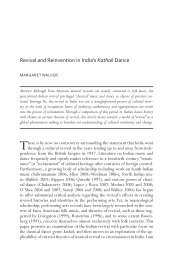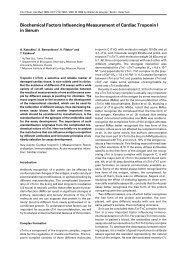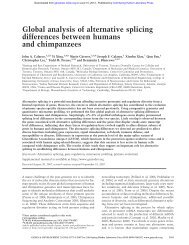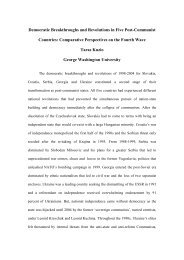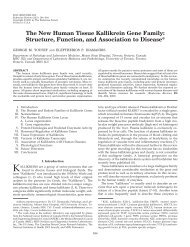The Socio-Economic Importance of Scientific Research To Canada
The Socio-Economic Importance of Scientific Research To Canada
The Socio-Economic Importance of Scientific Research To Canada
You also want an ePaper? Increase the reach of your titles
YUMPU automatically turns print PDFs into web optimized ePapers that Google loves.
<strong>The</strong> <strong>Socio</strong>-<strong>Economic</strong> <strong>Importance</strong> <strong>of</strong> <strong>Scientific</strong> <strong>Research</strong> to <strong>Canada</strong> Page 21© David A. Wolfe and Ammon Salteraccepted standards and codes able to transmit information, face–to–face contact and acommon cultural background might become <strong>of</strong> decisive importance for the informationexchange (Lundvall 1988, p. 355).<strong>The</strong>se untraded interdependencies become the collective property <strong>of</strong> the region and help theregional actors expand their range <strong>of</strong> activities by drawing one another through their variousand blended set <strong>of</strong> institutions, conventions, habits, and common infrastructure. <strong>The</strong> evidencediscussed here suggests that nations and regions need to maintain their own capability inresearch and development. Face–to–face interaction and personal links are essential for theresearch process. “In order to transfer existing forms <strong>of</strong> knowledge, research performers andusers <strong>of</strong>ten need close, personal interaction, given the importance <strong>of</strong> know-how (i.e. tacitknowledge that cannot be codified). This need to ‘be there’ forces firms and individuals tocongregate in particular localities in order to share and transfer knowledge quickly andeffectively” (Martin et al. 1996, p. 13). 13 Policies designed to support geographicalagglomeration would help facilitate this level <strong>of</strong> interaction. 14Spillovers are also common among types <strong>of</strong> research–related activities. “[I]t is assumed thatthe level <strong>of</strong> productivity achieved by one firm or industry depends not only on its own researchefforts but also on the general pool <strong>of</strong> knowledge accessible to it” (Griliches 1995, p. 63).Using US patent data, Scherer was able to construct development measures <strong>of</strong> the direction <strong>of</strong>spillovers by classifying a large sample <strong>of</strong> patents by the industry where the innovationoccurred and by the industry where it was expected to have an impact (1982, 1984). Otherspillover models have used the Canadian patent <strong>of</strong>fice date which provides an SIC codedestination for the patent. New work in Europe by Los and Verspagen has expanded thetreatment <strong>of</strong> spillovers. <strong>The</strong>y looked at the location <strong>of</strong> patent and paper citations in US patentrecords to determine the degree <strong>of</strong> spillover <strong>of</strong> domestic sources <strong>of</strong> science and technology.<strong>The</strong>y found that spillovers do exist, but they vary among sectors and countries (Los andVerspagen 1996). 1513 An important analysis <strong>of</strong> the advantage <strong>of</strong> "being there" has been made by Meric Gertler at the University <strong>of</strong> <strong>To</strong>ronto. Looking at crotools, Gertler found that substantial differences in a nation's social and economic institutions act as a barrier for successful technology teconomic systems are embedded in bits <strong>of</strong> technology. Gertler's work highlights the difficulties Canadian firms have relying on distant stechnology (Gertler 19 95 and 1 996).14 For a fuller discussion <strong>of</strong> these issues, cf. the treatment in Wolfe, 1997.15 Los and Verspagen’s approach focusing on patent citation records faces the same methodological problems asthat <strong>of</strong> Narin et al.21



